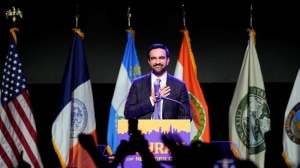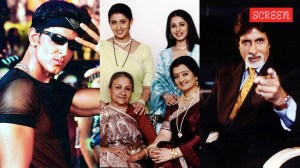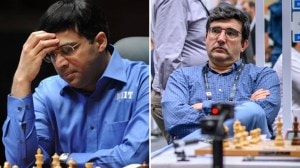The garb of Indian politics
There was always the old question of whether it matters how a woman dresses. Equated with politics, the question becomes more problematic...

There was always the old question of whether it matters how a woman dresses. Equated with politics, the question becomes more problematic — perhaps even more political.
In the past month the issue has manifested itself in various (and variously ridiculous) forms: there have been discussions about Hillary Rodham’s cleavage, the new French president’s glamorous wife and media reports that Pratibha Patil had her picture revoked because a part of her pallu covered her cheek.
Among Indian youth, however, there’s a curious paradox: while most Indian girls equate moving ahead with stunning clothes (and a break with established dress codes), the same isn’t true of girls who enter politics. Delhi’s student politics provides good examples of dress codes in the political realm. It perpetuates a simplification that’s vicious: you are either a ‘glamorous’ candidate or you are not one. And, more significantly, it’s the ‘glamorous’ candidate who practises a sort of rehearsed, ‘enlightened’ conservatism.
The NSUI, the Congress’s youth party, which prides itself on its “modern” candidates, always has its women activists in the salwar-kameez. Left parties, in contrast, will never “stoop” to the level of fielding a glamorous candidate. But here, too, the categorisation is brutal: a girl standing from such a party is deliberately butch; she deliberately dresses down.
“It’s not a choice I have. You do these things when you enter politics. That’s how you get taken seriously,” confided a candidate. If student politics mimics politics at the national level, then the dress code is the (unimaginative) way to go for a sort of mass identity for these women. But having said that, the fact also remains that among students dress codes are more important for the women than for the men.
Politics, which has long been an indicator of how society groups itself, also dictates how society should think. It is also, unashamedly, a force that tries to intimidate through a code — with the way one dresses being the biggest externalisation of that code.
But for the rest of us, it should not really matter. One cool evening recently, I was standing with a male friend at a roadside dhaba, feeling unsuitably dressed in a skirt. I also happened to be the only woman there. I was the picture of dainty feminine poise, until the glass of tea I was holding slipped from my hands and shattered on to the road. To my surprise, the helpers didn’t even grimace. “Customers break glasses every day,” they said. To them, there was no difference between the burly men who visited the dhaba every two hours and the elusive skirt-clad female entity: we were both — happily — clumsy. The skirt made no difference at all.
As a society, as fairly political one, we are far from breaking dress codes; and also far from answering the uncomfortable questions that preoccupy some in the Western media. Questions, for instance, about whether Hillary Clinton showed too much cleavage.


- 01
- 02
- 03
- 04
- 05





























